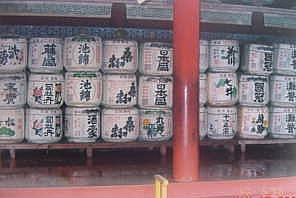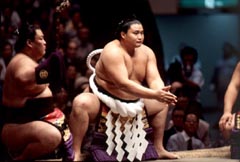Japan
Japan lies on the western edge of the Pacific Ocean and east of the Eurasian continent. The land comprises four large islands - Honshu, Hokkaido, Kyushu and Shikoku, together with other smaller islands. The Pacific Ocean lies to the east while the Sea of Japan and the East China Sea separate Japan from the Asian continent. Japan's total land area is about 378,000 square kilometers.
Most of Japan is in the Temperate Zone and has a humid monsoon climate, with southeasterly winds blowing from the Pacific Ocean during the summer and northwesterly winds from the Eurasian continent in the winter. Hokkaido and Okinawa, have very different climates. A warm ocean current Kuroshio flows northeastward along the southern part of the Japan, and a branch of it, known as the Tsushima Current, flows into the Sea of Japan along the west side of the country. From the north, a cold current known as the Oyashio (or Okhotsk Current) flows south along Japan's east coast. The country often suffers such serious natural disasters as flooding from typhoons and torrential rain, volcanic eruptions, and earthquakes, but tornadoes are rare.
It has a population of 125 million, making Japan the world's eighth most populous nation. Nearly all the Japanese live on the four main islands of Hokkaido, Honshu, Shikoku, and Kyushu.
Japan also has one of the world's highest population densities; there are 338.4 residents for every square kilometer of land. There are 47 prefectural and over 3,300 municipal governments in Japan. Tokyo, the nation's capital, is the political and economic center of Japan. It is also the most populous part of the country; nearly one quarter of the Japanese--around 30 million people--live within 50 kilometers of Tokyo.
Historicaly, Japan is said to have become a nationhood in the Yamato period, which began at the end of the third century AD. The Emperor began to unified a number of small states under single rule from their bases around what are now Nara and Osaka Prefectures. In 604 Prince Shotoku laid down Japan's first constitution. The Nara period began at the beginning of the eighth century with the establishment of the country's first permanent capital in Nara. Toward the end of the century, the capital was transferred to Kyoto, launching the Heian period, during which noble families predominated and a distinct national culture blossomed. From the Kamakura period, which began at the end of the twelfth century, to the close of the Edo period, Japan was ruled by samurai, or warrior class. Civil war broke out during the middle of the fifteenth century, as samurai lords of different domains fought one another. The agent of pacification and national unity was Toyotomi Hideyoshi. In seventeenth century, Tokugawa Ieyasu set up a government in Edo (now Tokyo), and the Edo period began.
The age of the samurai came to an end with the Meiji Restoration of 1868, and a new system of government centered on the Emperor was set up. The new government promoted modernization, adopted Western political, social and economic systems. |








